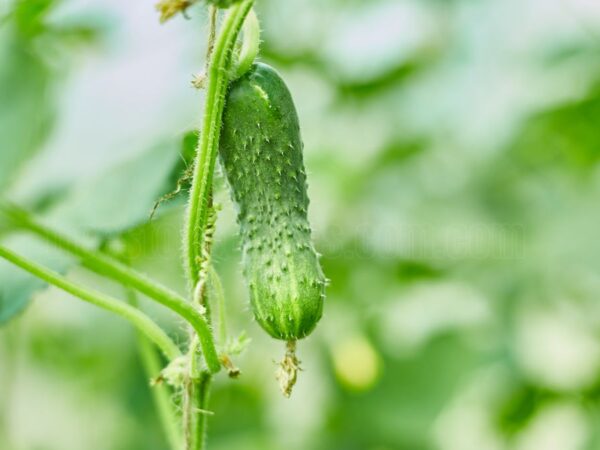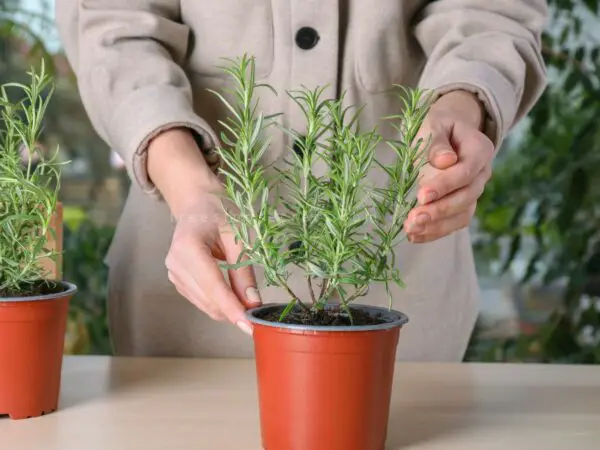Did you know that sycamore trees have been utilized for various purposes for over 2500 years? These majestic trees offer more than just shade and beauty. From providing sturdy timber for furniture to yielding sweet sap, the uses of sycamore trees are diverse and intriguing. Whether it's crafting musical instruments or creating durable butcher blocks, hickory trees play a vital role in different industries.
Sycamores also hold cultural significance in many societies worldwide, symbolizing strength and protection. Join us as we delve into the fascinating world of sycamore trees, exploring their practical applications and historical importance.
Key Takeaways
- Utilize sycamore trees: Consider planting sycamore trees in your area to provide habitat for wildlife and enjoy the various uses of the tree.
- Explore Bushcraft Skills: Learn about bushcraft uses of sycamore trees such as fire-starting, shelter-building, and crafting tools from its wood.
- Harvest Sycamore Bark: Explore the medicinal and practical uses of sycamore tree bark, like creating cordage or using it for its astringent properties.
- Contribute to Conservation: Support conservation efforts to protect sycamore trees and their ecosystems from threats like habitat loss and disease.
- Appreciate Symbolism: Understand the mythology and symbolism associated with sycamore trees in different cultures and historical contexts.
- Observe Seasonal Changes: Witness the beauty of sycamores throughout the seasons and appreciate their unique characteristics.
Sycamore Tree Overview
Appearance
Sycamore trees are easily recognizable by their distinctive mottled bark that peels off in patches. The leaves of a sycamore tree are large, palm-shaped, and have a vibrant green color. These trees can grow to be massive, reaching heights of up to 100 feet.
One characteristic feature of sycamores, a tree species, is their rapid growth rate; they often grow several feet per year. Belonging to the Platanus genus, these trees are deciduous and have a long lifespan - some living for over 500 years.
Identifying Seasons
In spring, sycamore trees produce clusters of small flowers that develop into seed balls. The native sycamore tree species during summer, provides ample shade and creates a lush canopy. As fall arrives, the leaves turn yellow or brown before eventually falling off in winter.
The American sycamore (Platanus occidentalis) is the most common species found in North America. Native to the eastern United States, the sycamore tree is frequently seen along riverbanks and in floodplains due to its preference for moist environments with plenty of sunlight. With its broad crown and impressive size potential, this variety stands out among other types of sycamores.
Sycamore Tree and Wildlife
Wildlife Value
Sycamore trees play a crucial role in supporting wildlife by offering both shelter and food. Birds, like woodpeckers and owls, find homes in the tree's cavities, which are excellent nesting spots. These majestic trees also provide sustenance for various creatures; squirrels and other small mammals heavily rely on sycamore seeds as a primary source of food.
The presence of sycamore trees contributes significantly to the biodiversity of ecosystems. Their extensive branches serve as ideal locations for birds and insects to build nests, ensuring a safe living environment for these creatures. Moreover, when leaves from sycamore tree fall to the ground, they decompose into nutrient-rich soil that supports the growth of other plant species.
Habitat Support
In addition to providing direct benefits to wildlife through nesting opportunities and food sources, sycamore trees indirectly contribute to maintaining diverse habitats. These native tree species create microhabitats within their structure where various organisms can thrive harmoniously. The fallen dead branches from sycamores act as shelters for smaller animals while simultaneously enriching the soil with essential nutrients.
The intricate relationship between sycamore trees and wildlife highlights how these magnificent trees are not just towering structures but integral components of thriving ecosystems. By fostering an environment that supports different forms of life, including birds seeking refuge or insects finding nourishment, sycamores, a tree species, demonstrate their vital role in sustaining ecological balance.
Bushcraft Uses
Tools Creation
Sycamore trees are valuable in bushcraft for tool-making. The sturdy wood of sycamores is perfect for crafting handles for various tools like hammers and chisels. This sycamore tree wood is ideal for creating cutting boards and small utensils due to its durability and resistance to wear.
Indigenous communities have long utilized the branches and foliage of sycamore trees for constructing shelters in bushcraft. The robust tree branches provide a strong framework, while the dense foliage offers excellent coverage from the elements. Furthermore, the bark of the tree can be peeled off and used as a waterproof layer on shelter walls, enhancing protection against rain or moisture infiltration.
Shelter Building
Sycamore trees offer valuable resources. The bark of these trees serves as excellent tinder material that easily catches fire when ignited. This makes it an essential component in starting fires efficiently during outdoor activities such as camping or survival situations.
The dry leaves shed by sycamore tree are highly flammable kindling that ignites quickly when exposed to flames. By utilizing both the bark and leaves of sycamore trees, individuals engaging in bushcraft can effectively start fires without relying on modern tools or equipment.
Sycamore Tree Bark Uses
Traditional Medicine
Sycamore trees have a history of being utilized in traditional medicine. The inner bark was brewed into infusions that were thought to alleviate respiratory issues. Crushed sycamore leaves from the tree were applied as poultices on the skin to provide relief from various irritations.
Crafting Materials play an essential role in utilizing sycamore trees. Woodworkers often choose sycamore wood for its visually appealing grain pattern and ease of carving. This type of tree wood is commonly employed to craft furniture, cabinets, and other decorative items due to its versatility and aesthetic qualities.
Benefits of Planting Sycamores
Environmental Impact
Sycamore trees are essential for the environment. Their root systems play a crucial role in stabilizing riverbanks, preventing erosion, and reducing sediment runoff into waterways. By binding soil and tree together, they help maintain the integrity of river ecosystems. Moreover, sycamores aid in air purification by absorbing pollutants through their leaves. This natural process contributes to cleaner air quality and healthier surroundings.
Sycamore trees are highly valued for their visual appeal in parks and landscapes. The large size and unique appearance of sycamores, a tree, add character to outdoor spaces, enhancing the overall beauty of an area. Furthermore, the changing colors of their leaves throughout different seasons create breathtaking displays that captivate onlookers' attention. These trees not only provide environmental benefits but also contribute significantly to the visual charm of various settings.
Shade and Cooling
One significant advantage of planting sycamore trees is the ample shade they offer, making them popular choices for urban areas seeking relief from intense sunlight exposure. With their broad leaves forming a dense canopy above, sycamores effectively block sunlight penetration and reduce temperatures underneath their shade-covered areas. This cooling effect is particularly beneficial during hot summer months when buildings and outdoor spaces can become uncomfortably warm due to direct sun exposure.
Mythology and Symbolism
Folklore Legends
Sycamore trees have a rich history in folklore legends. In Greek mythology, these trees were considered sacred to the goddess Artemis. Native American tribes also viewed sycamores as symbols of strength and protection.
These tales highlight the deep-rooted connection between sycamore trees and ancient beliefs. For instance, in Greece, the association with Artemis signifies reverence for nature's power. Similarly, Native American cultures valued sycamores for their protective qualities.
Cultural Significance
Beyond folklore, sycamore trees play a significant role in various societies worldwide due to their symbolic importance. References to these majestic trees can be found in literature, art pieces, and religious scriptures across different eras.
The cultural significance of sycamores lies in their representation of resilience, longevity, and natural beauty. Through artistic expressions or religious allegories featuring sycamore trees, communities convey themes of endurance and admiration for nature's wonders.
Threats and Conservation
Threats to Sycamores
Sycamore trees face various threats that endanger their existence. One significant threat is diseases like anthracnose, which can cause the trees to lose their leaves. pollution and habitat loss are major concerns for sycamore populations. These factors contribute to the decline of sycamores in many regions.
Climate change also poses a risk to sycamore trees. As temperatures shift and weather patterns become more unpredictable, the distribution and overall health of these trees may be affected negatively. This environmental challenge highlights the importance of implementing measures to protect sycamores from the impacts of climate change.
- Diseases like anthracnose can defoliate sycamore trees.
- Pollution and habitat loss threaten sycamore populations.
- Climate change may impact the distribution and health of sycamores.
Conservation Efforts
To safeguard sycamore trees, conservation efforts play a crucial role in preserving these majestic species. Various conservation organizations actively work towards protecting sycamore habitats and advocating for their planting in suitable environments. By focusing on conservation initiatives, these organizations aim to ensure the longevity of sycamores for future generations.
Moreover, restoration projects are instrumental in reviving riparian areas where sycamores naturally thrive. These projects involve restoring ecosystems that support healthy growth conditions for sycamores, aiding in their recovery from threats such as diseases or habitat destruction.
Public awareness campaigns also play a vital role in educating communities about why it is essential to conserve and protect our natural environment's biodiversity by highlighting the significance of preserving iconic species like sycamore trees.
- Conservation organizations strive to protect sycamore habitats.
- Restoration projects focus on reviving riparian areas for healthy tree growth.
- Public awareness campaigns raise understanding about conserving valuable tree species.
Sycamore in Seasons
Spring and Summer
Sycamore trees play vital roles during spring and summer. Their small flowers attract pollinators such as bees, aiding in the pollination process. The dense foliage of sycamores offers shade and shelter for various wildlife species seeking refuge from the sun's heat. The vibrant green color of their leaves enhances the beauty of landscapes during these seasons, creating picturesque scenery.
During fall and winter, sycamore trees undergo significant changes. In fall, their leaves transition into striking shades of yellow or brown before gracefully falling to the ground. The bare branches of sycamores then stand out against the winter sky, showcasing unique silhouettes that add character to the surroundings. Moreover, sycamores maintain visual interest throughout winter with their distinctive peeling bark texture and intriguing branch structure that captivate observers even amidst colder months.
Colonizing Ability
Growth Patterns
Sycamore trees are known for their rapid growth rate, towering to impressive heights between 80 to 100 feet. These majestic trees can shoot up several feet each year, earning them a reputation as one of the quickest-growing tree varieties. As sycamores mature, they develop a spreading canopy and form a broad crown that provides ample shade and shelter.
Their ability to adapt is remarkable; sycamore trees exhibit high adaptability to various soil types and environmental conditions. They have the unique capability to thrive in both wet and dry soils, showcasing their versatility across different landscapes. Moreover, these resilient trees can withstand the challenges of urban environments, flourishing even amidst the concrete jungle of cities.
Adaptability
Sycamore trees are praised for their robust nature in adapting to diverse surroundings. Their impressive growth patterns make them ideal choices for landscaping projects where quick results are desired. Due to their rapid growth rate, these trees are often used as windbreaks or privacy screens on properties with large open spaces.
Moreover, their spreading canopy offers excellent shade during hot summer months, making them popular choices for parks and recreational areas. The adaptability of sycamore trees extends beyond soil types; they also display resilience against pests and diseases commonly found in urban settings.
You've delved into the diverse world of sycamore trees, discovering their multifaceted roles in nature and human life. From providing shelter to wildlife to offering versatile materials for bushcraft, sycamores stand as resilient symbols of growth and adaptability. Their bark hides stories of ancient uses, while their presence in mythology adds a touch of magic to our surroundings. As you reflect on the threats they face and the importance of conservation efforts, remember that each season brings new opportunities to appreciate these majestic trees.
Take a moment to observe the sycamores around you, noticing how they change with the seasons and support a myriad of life forms. Consider planting a sycamore tree yourself or supporting local conservation initiatives to ensure these giants thrive for generations to come.
Frequently Asked Questions
What are the main uses of a sycamore tree?
Sycamore trees have various uses, including providing shelter and food for wildlife, being utilized in bushcraft activities like crafting tools and containers, using their bark for medicinal purposes or dyeing fabric, enjoying the benefits of their shade when planted as ornamental trees, and symbolizing strength and protection in mythology.
How does a sycamore tree benefit wildlife?
Sycamore trees serve as crucial habitats for various wildlife species. They offer nesting sites for birds like owls and woodpeckers, provide food sources through their seeds and insects attracted to them, create shelter for small mammals seeking refuge from predators or harsh weather conditions, contributing significantly to the biodiversity of ecosystems they inhabit.
Can you elaborate on the bushcraft uses of sycamore trees?
In bushcraft practices, sycamores are valued for their versatile wood. It can be fashioned into tools such as spoons or bowls due to its durability yet workability. The inner bark can be used to weave baskets or make cordage—a testament to how resourceful this tree species is in outdoor crafting pursuits.
What are some benefits of planting sycamores?
Planting sycamores brings numerous advantages beyond aesthetics. These majestic trees provide ample shade during hot seasons while enhancing air quality by absorbing pollutants. Their extensive root systems help prevent soil erosion along riverbanks and stabilize landscapes prone to landslides—making them valuable additions to both urban environments and natural settings.
Why is conservation important for preserving sycamore trees?
Conservation efforts play a vital role in safeguarding sycamores from threats such as habitat loss due to deforestation or urban development. By protecting these trees' habitats through conservation initiatives like reforestation projects or establishing protected areas where they thrive naturally ensures future generations can continue benefiting from all that these iconic trees offer.
Image Source: Paid image from CANVA




